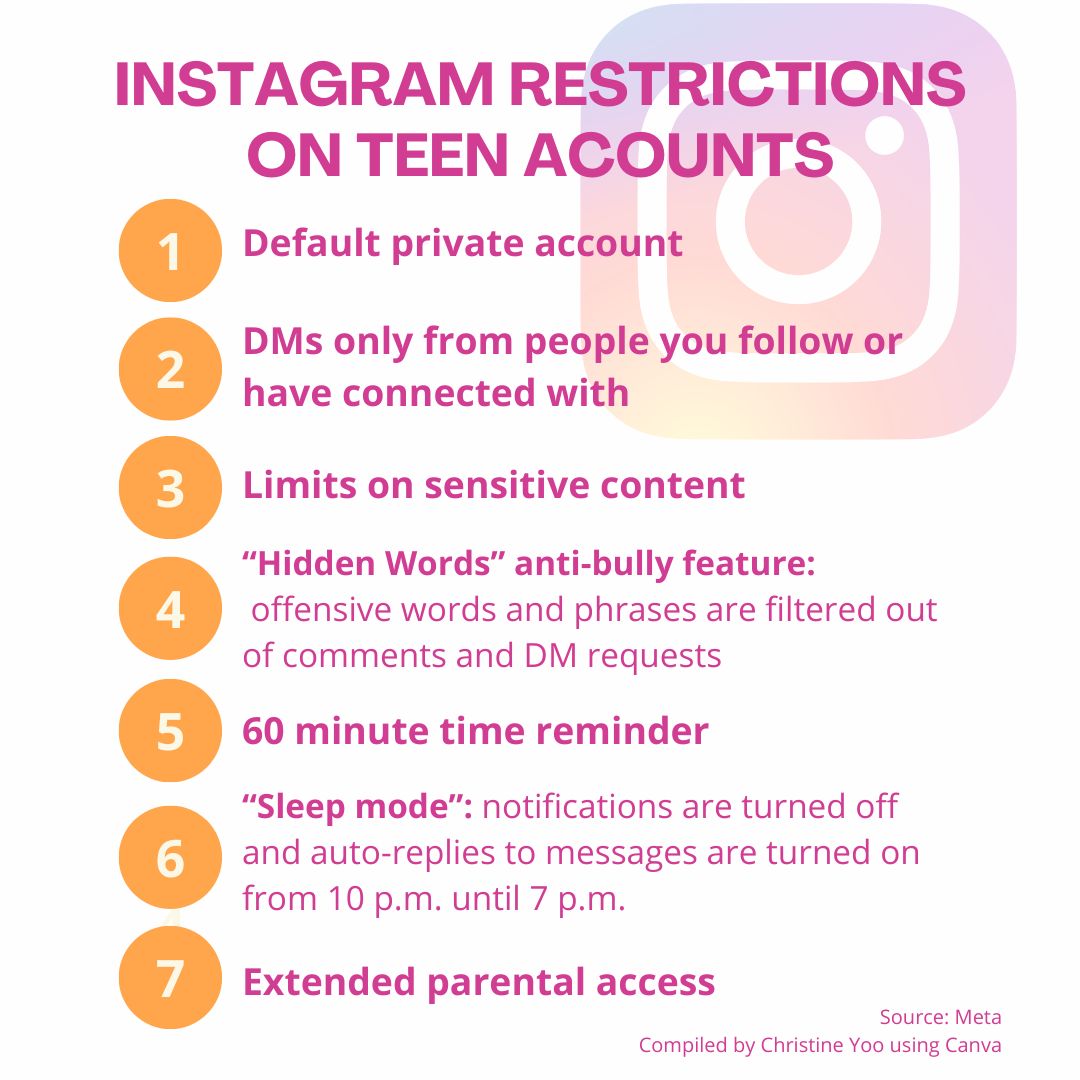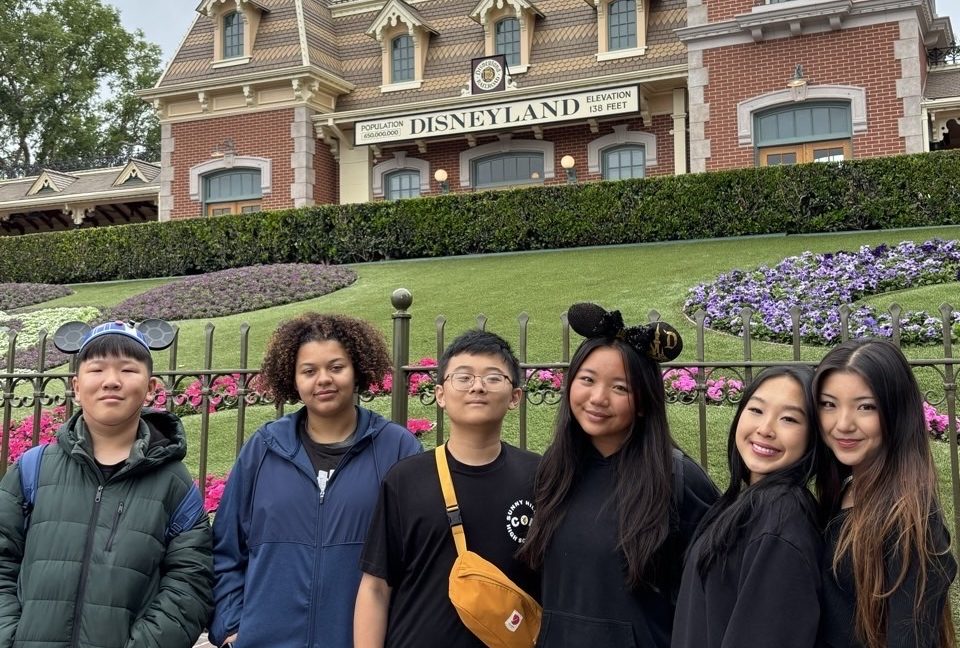Social media’s rise in popularity among teenagers has subsequently sparked widespread public concern about its negative effects regarding harmful content and an addictive dependence on technology.
To combat this issue, the U.S., U.K., Canada and Australia have begun to incorporate teen accounts on Instagram for those under 18 years old, starting Tuesday, Sept. 24, slowly transferring existing accounts belonging to minors to this new setting.
Instagram’s decision to implement teen accounts is a strong step toward addressing today’s concerns about adolescents and their relationship with social media and can help decrease teenagers’ addiction to their screens and negative thoughts or behaviors caused by platforms.
According to Gallup’s 2023 “Familial and Adolescent Health Survey,” 51% of U.S. teenagers spend a daily average of 4.8 hours on social media — two hours more than the recommended screen time.
Long periods of time spent on platforms like Instagram can cause harmful risks like increasing the chance of individuals eventually running into content that may not be appropriate or healthy. This exposure has the potential to create harmful thoughts or behavior.
For example, in a September 2023 article by the American Psychological Association [APA] during the first year of the COVID-19 pandemic, clinical psychologist Mary Ann McCabe said she saw a flood of eating disorder diagnoses among her teen patients.
“These kids often reported that they started by watching something relatively benign, like exercise videos,” McCabe said. “But their social media algorithms doubled down on that content, offering up more and more material related to body image and weight; it was an echo chamber, and several of my patients attributed their eating disorders to this online behavior.”
According to the APA, research shows that being exposed to such unsafe behaviors online can cause a greater risk of teenagers attempting similar actions.
Through Instagram’s new teen account system, sensitive content like this would be limited, lowering the chance of exposure to harmful behavior. This could help prevent unhealthy actions among users and control what the younger demographic can view and interact with.
If video streaming platforms such as Netflix and Disney+ have teen account settings for parents to manage what age-appropriate shows and movies their children can watch, Instagram should have the same restrictions for its content.
On top of content limitations, users will also receive notifications if they use Instagram for more than 60 minutes. From 10 p.m. until 7 a.m., the account will go into “sleep mode,” turning off notifications and sending auto-replies to direct messages.
These reminders and modes can encourage teenagers to step away from their electronic devices and subsequently drop their screen time. Although teenagers can dismiss the 60-minute reminder, parents can also have more control over the screen limit, and the app will disable itself once that set limit is reached. Through this setting, parents can decide what they believe is an appropriate amount of time for their child to be on social media and help lower the extensive technology usage among teenagers.
Not only does this addition decrease screen time, but it also gives parents better access to their children’s usage of electronics and allows them to do what works best for the family.

Private messages on teen accounts will also be restricted so that only accounts the users follow or are already connected to will be able to chat with them. This could help decrease the risk of inappropriate messages or harassment on the platform.
Parents can also see who their children are messaging in the past seven days while not having access to the actual DMs themselves. Not being able to view the texts still gives teenagers their right to privacy, but this precaution can also help adults catch any potentially concerning conversations their children might have.
Some may argue that these restrictions are too extreme for older adolescents, but Instagram allows 16 and 17-year-olds to turn off the teen settings on their account. For those under 16 years old, a guardian must give permission through the parental supervision system, according to a Tuesday, Sept, 17, article by Meta. Parental supervision gives adults the power to approve and deny their children’s requests to change settings or manage their own settings.
This allows older adolescents to have more independence and control over their social media while ensuring younger audiences don’t experience the potential negative effects of social media early on.
Others also point out that making teen accounts is futile because teenagers can simply create an account with a fake birthday to lie about their age. In response, Meta announced its plan to develop technology that can proactively find these accounts with fake birthdays and will start testing this technology in the U.S. in early 2025. Even though this may not be able to completely eliminate falsely made accounts, it has the potential to prevent them. In the meantime, it would be beneficial for Instagram to also require additional verification steps for users when inputting their age.
According to the Tuesday, Sept, 17, article by Meta, the technology company platforms like Facebook, Threads and WhatsApp alongside Instagram, teen accounts will also become reality in the European Union later this year and around the world starting January 2025.
At the end of the day, even though Instagram is making progress for the health of its young audience and users, discourse about social media and boundaries needs to happen between parents and their children for complete understanding and effect. With flexible restriction settings in the teen accounts, parents can discuss what is right for them when deciding what restrictions and parental oversight to place. This new change can turn social media into platforms of positivity and expression for teenagers instead of a harmful, addictive space.














